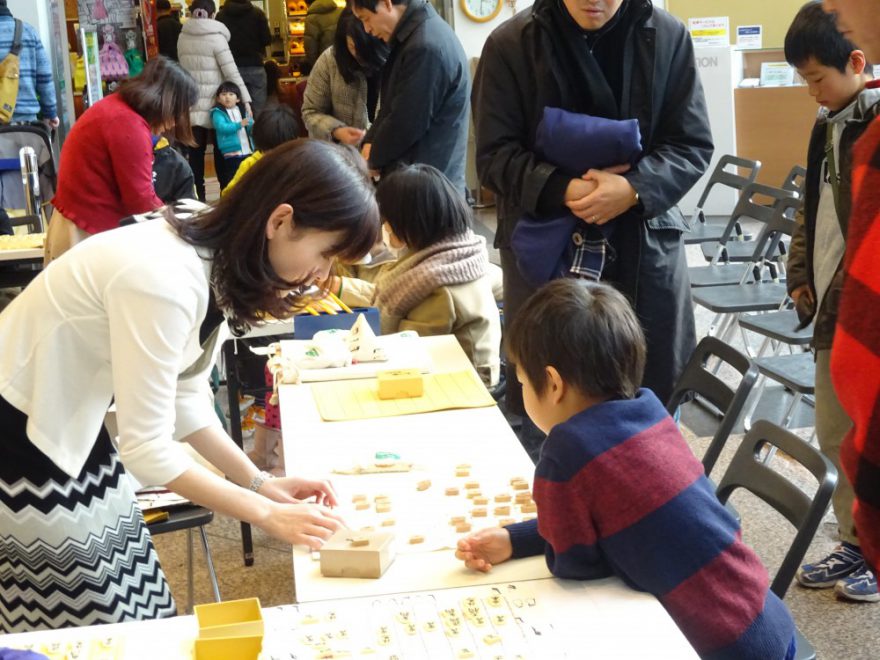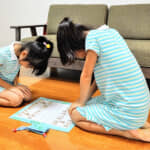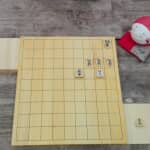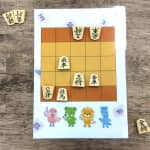Shogi 19 October 2016
Five Points for Successful Shogi Learning
Explore art of Shogi. A professional Shogi player invites you to the world of Shogi along with traditional Japanese culture.
I’d like to talk about five things that many beginners often fail today. Novice players can make a quick progress if they can avoid them.
I think that the best and authentic way to learn Shogi is through trial and fail. So, you had better play Shogi with various different opponents many times. However, it is quite hard to keep playing without knowing your problems. So, I would like to share some points that many novice players often stumble into, and how to overcome those. I hope my tips will help those beginners to quickly improve skills and enjoy Shogi even more.
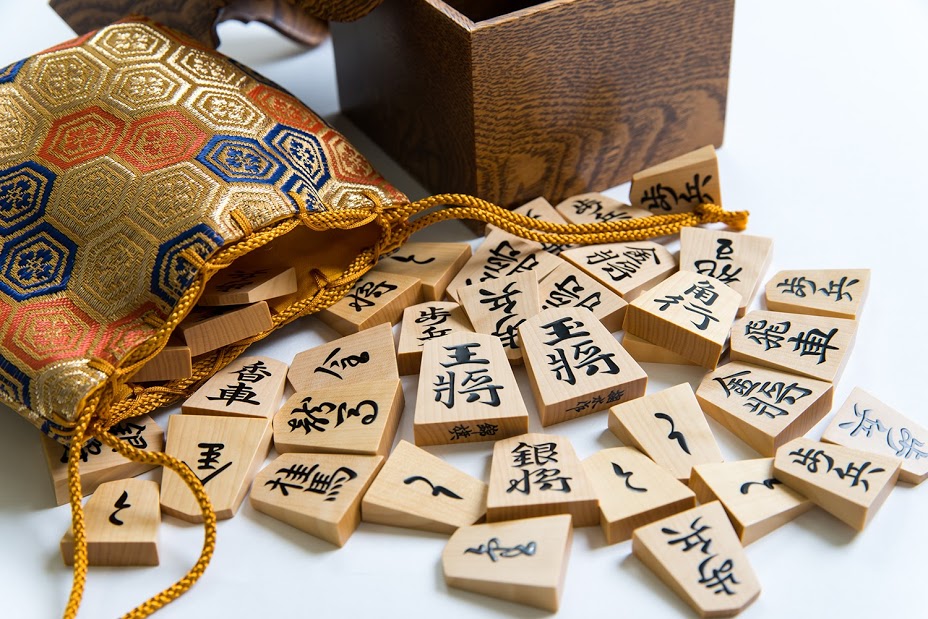
1. Beginners try to memorize all the piece moves at once.
Shogi has eight kinds of pieces. Compered to other board games in the world such as chess, Xiangqi of China and Janggi of Korea, Shogi has relatively large numbers of pieces. Chess has six, Xiangqi and Janggi have seven kinds of pieces.
In addition, each of Shogi pieces moves quite uniquely. The notion of promotion is also a peculiar element of Shogi. So, it is very understandable that novice players feel puzzled and find it difficult to remember all the piece moves and rules. So, you don’t need to rush yourself.
You can set a manual or a textbook for piece moves beside the board and check the moves whenev-er you need to.
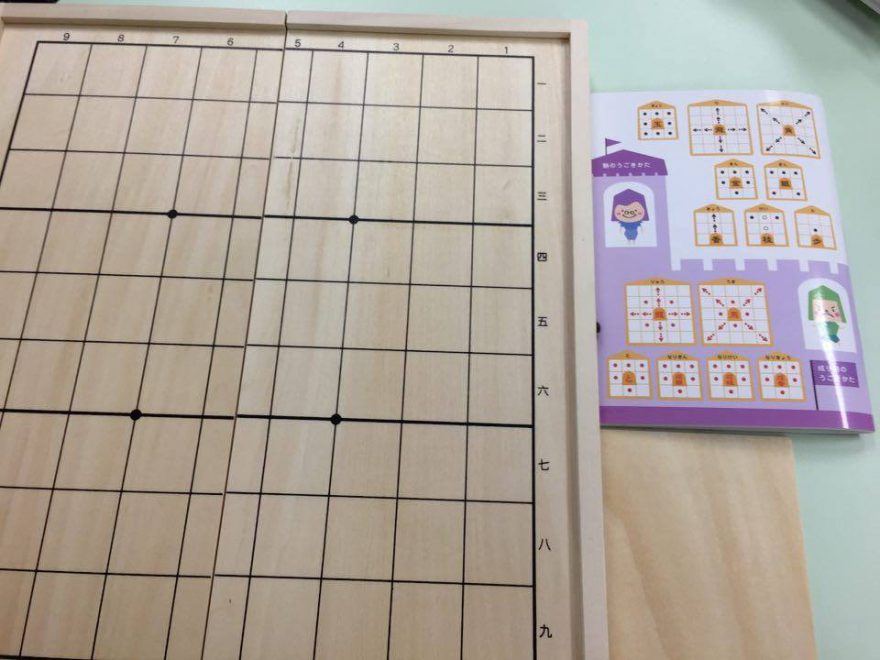
The important point in Shogi is not to memorize the piece moves. The important is to think about the process to capture the opponent’s king with many pieces of various unique moves.
Thus, you don’t need to feel embarrassed at all to look at the manual beside the board. It is not cheating at all.
You may not be able to easily remember the piece moves quickly, but as you keep playing Shogi with a manual beside the board, your fingers will remember the moves naturally.
I also recommend that you use “Dobutsu Shogi (animal chess),” a small Shogi variant for young children, and a starter kit for Shogi learners. The moves are printed on the pieces for easy under-standing. Minishogi (5×5 chess) is also good for beginners.
2. Beginners sometimes forget the goal of Shogi. The goal is to capture the opponent’s king.
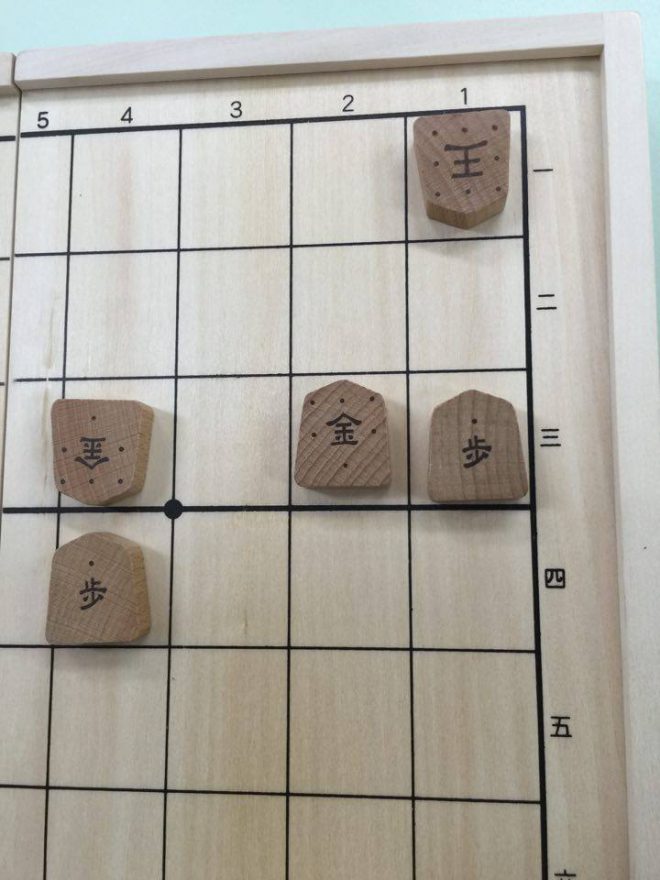
Look at the above picture.
Under this situation, which piece would you move to which square? Consider that you are at the bottom side.
The correct answer is that you move the Kin at 23 to 12. It’s too easy for you, right? 🙂
Yet, a novice player tends to capture the opponent’s Kin at 43 by his/her Fu at 44.
A beginner wants to increase the pieces in hand. Thus, he/she is apt to go for an easy piece capture despite there is a chance of checkmate.
The essential is to find a way for a checkmate, and also a danger of your king being threatened of checkmate, before you move a piece.
I would like to share one good training method to keep checkmate in your mind.
That is a “TsumeShogi (checkmate problem).”
TsumeShogi is like a Shogi puzzle. Various Shogi situations are printed on the worksheets and you figure out a way for checkmate. There are many kinds of those available on the market, so please try out one of those.
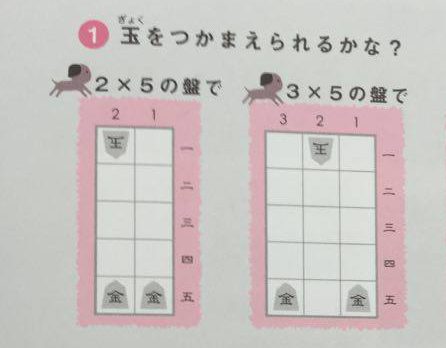
3. Too many choices. Which piece should I move?
As mentioned previously, Shogi has many kinds of pieces. That means you have many choices of pieces to move. Especially at the start of the game, you don’t know which piece you should move as you can’t esti-mate opponent’s moves.
So, I would like to recommend a training called as “Aozora Shogi (Blue sky Shogi).” It is also called as “Funashi Shogi (Shogi without FU pieces).” Novice players find it most difficult to make the first move.
Indeed, it is difficult to decide which FU should be a starter since there are nine FU set at the front line. You do not need to worry about that in “Aozora Shogi.”
Without all the FU pieces on the front line, highly mobile HISHA (Rook) and KAKU (Bishop) come on the front line. Also, KIN (Gold) and GIN (Silver) can move freely. You can move pieces more dynamically in “Aozora Shogi” than you do in regular games. Above all, it is easier for you to think which piece should be moved with fewer pieces.
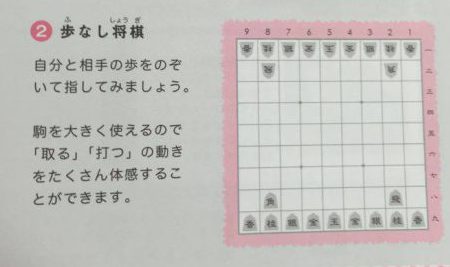
4. Novice players extremely hate to lose.
As I often say this on my blog, Shogi is a serious one on one match without a tie end.
Thus, if one wins, the other loses inevitably.
Losing is really tough to accept. Novice players hate to lose so much that some of them tend to avoid playing a match.
As mentioned before, the best way to improve your Shogi skills is through playing games with many different opponents. You cannot make a good player without many experiences.
We introduced the five important reasons to accept your own defeat on the past blog articles.
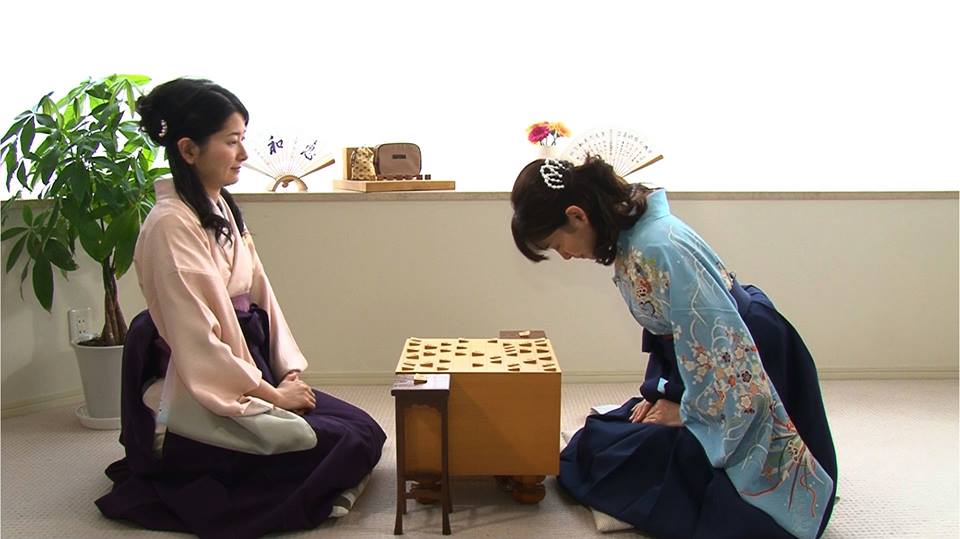
It is not embarrassing to lose. It is a great opportunity for you to grow up to the next level.
5. Novice players tend to be convinced that Shogi is difficult.
Don’t you believe in that you need to read tens and hundreds moves ahead? I myself am often asked how many moves I read ahead. Surely, professional players may need to read potential moves ahead. Yet, how can a novice player do the same thing as a pro?
Beginners believe that Shogi is difficult since they are obsessed with an idea that they need to read moves ahead.
So, to enjoy Shogi, beginners should not try to read moves ahead, but concentrate in what they can do with the pieces currently on the board.
Sometimes you do well but not in other times. When you cannot do well, you loosen up yourself, and try to learn through trial and fail. Slowly, gradually, step by step, you come to be able to read moves ahead.
I hope that you find Shogi fun rather than difficult.
